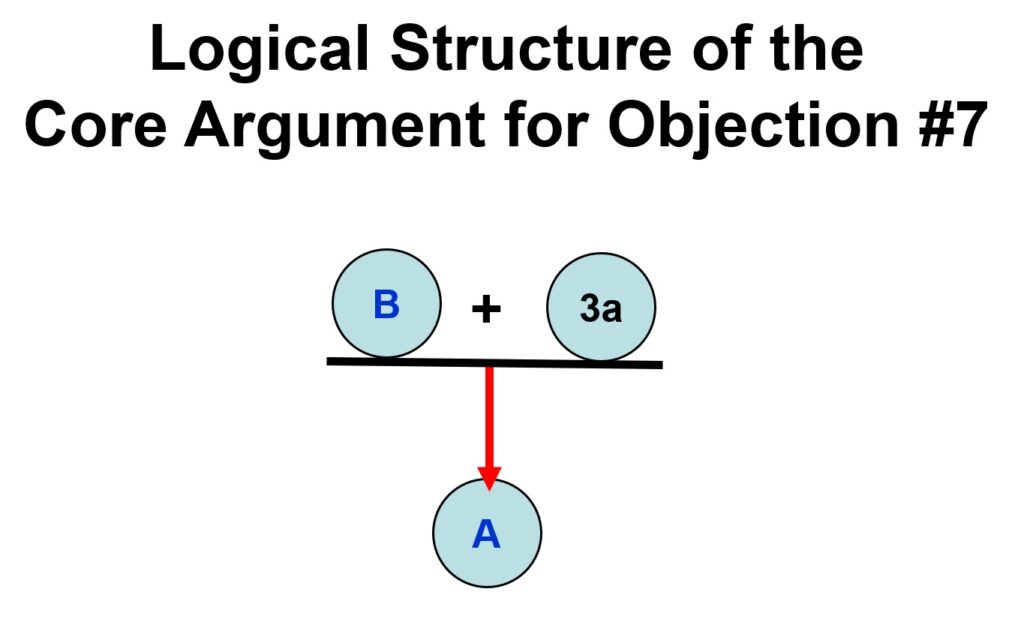Kreeft’s Case Against the Swoon Theory – Part 25: The Argument for Premise (3a) of Objection #7
WHERE WE ARE
In Part 23 of this series, I provided a careful analysis of the argument constituting Objection #7 (Who Moved the Stone?) by Peter Kreeft and Ronald Tacelli against the Swoon Theory in Chapter 8 of their Handbook of Christian Apologetics (hereafter: HCA).
In Part 24 of this series, I showed that the key premise (B) in the core argument of Objection #7 is FALSE, and that the core argument is thus UNSOUND, and that Objection #7 against the Swoon Theory therefore FAILS.
In this current post, I will begin to carefully evaluate the argument supporting the other key premise in the core argument: premise (3a).
THE CORE ARGUMENT OF OBJECTION #7

B. IF the Swoon Theory is true, THEN there is a plausible natural explanation for how the stone was moved from the door of Jesus’ tomb on the weekend after Jesus was crucified.
3a. There is no plausible natural explanation for how the stone was moved from the door of Jesus’ tomb on the weekend after Jesus was crucified.
THEREFORE:
A. The Swoon Theory is FALSE.
THE SUB-ARGUMENT FOR THE KEY PREMISE (3A)

D1. Jesus did NOT move the stone from the door of Jesus’ tomb on the weekend after Jesus was crucified (unless Jesus experienced a supernatural resurrection).
E. The Roman soldiers did NOT move the stone from the door of Jesus’ tomb on the weekend after Jesus was crucified.
F. The Jewish authorities in Jerusalem did NOT move the stone from the door of Jesus’ tomb on the weekend after Jesus was crucified.
G. It is NOT the case that some or all of Jesus’ eleven remaining disciples moved the stone from the door of Jesus’ tomb on the weekend after Jesus was crucified.
C. There are only four possible natural explanations for how the stone was moved from the door of Jesus’ tomb on the weekend after Jesus was crucified: (a) Jesus moved the stone, (b) the Roman soldiers moved the stone, (c) the Jewish authorities in Jerusalem moved the stone, or (d) some (or all) of Jesus’ remaining eleven disciples moved the stone.
THEREFORE:
3a. There is no plausible natural explanation for how the stone was moved from the door of Jesus’ tomb on the weekend after Jesus was crucified.
Kreeft and Tacelli provide sub-arguments in support of each of the premises in this argument, except for premise (C). They don’t give any reason to believe that premise (C) is true. Premise (C) is not obviously true, so premise (C) is DUBIOUS and might well be FALSE.
Furthermore, with just a bit of thinking, it becomes clear that premise (C) is FALSE, and thus the argument for the key premise (3a) is UNSOUND and should be rejected. Since the argument for (3a) is UNSOUND, and because premise (3a) is not obviously true, we may reasonably conclude that the key premise (3a) is DUBIOUS and it might well be FALSE. Therefore, because a key premise of the core argument of Objection #7 is DUBIOUS, we should reject the core argument, and that means that Objection #7 against the Swoon Theory FAILS.
Premise (C) asserts that there are only four possible natural explanations for how the stone at the door of Jesus’ tomb was moved, but there are several more natural explanations than just the four specified in premise (C), so that premise is FALSE.
Here are some other possible natural explanations:
- Some Jews who were neither disciples of Jesus nor part of the Jewish leadership in Jerusalem moved the stone.
- Some Egyptians who were neither Jews nor disciples of Jesus moved the stone.
- Some Africans who were neither Jews nor disciples of Jesus moved the stone.
- Some Greeks who were neither Jews nor disciples of Jesus moved the stone.
- Some Romans who were not soldiers moved the stone.
- Some Roman soldiers who were not guarding the tomb of Jesus moved the stone.
- Some followers of Jesus who were not part of the remaining eleven disciples moved the stone.
- An earthquake (produced by natural causes) moved the stone.
- A bolt of lightning (produced by natural causes) moved the stone.
- A small meteorite (produced by natural causes) stuck the stone and made it move.
Since there are at least ten other possible natural explanations in addition to the four natural explanations specified by premise (C), it is clear that premise (C) is FALSE.
Thus, the argument for premise (3a) is UNSOUND and should be rejected. So, the key premise (3a) is DUBIOUS and might well be FALSE. Therefore, the core argument for Objection #7 is based on a DUBIOUS premise, so we may reasonably conclude that Objection #7 against the Swoon Theory FAILS.
In Part 24 of this series, I have shown that the key premise (B) in the core argument is FALSE, and now we see that the key premise (3a) in the core argument is DUBIOUS, thus it is clear that the core argument of Objection #7 (Who Moved the Stone?) should be rejected and that this objection against the Swoon Theory clearly FAILS, just like all of the previous objections that we have examined FAILED.
In upcoming posts, I will show that the sub-arguments for the other premises in the argument supporting (3a) are bad arguments, making it clear and certain that the argument supporting the key premise (3a) is a bad argument that gives us no good reason to believe premise (3a).



